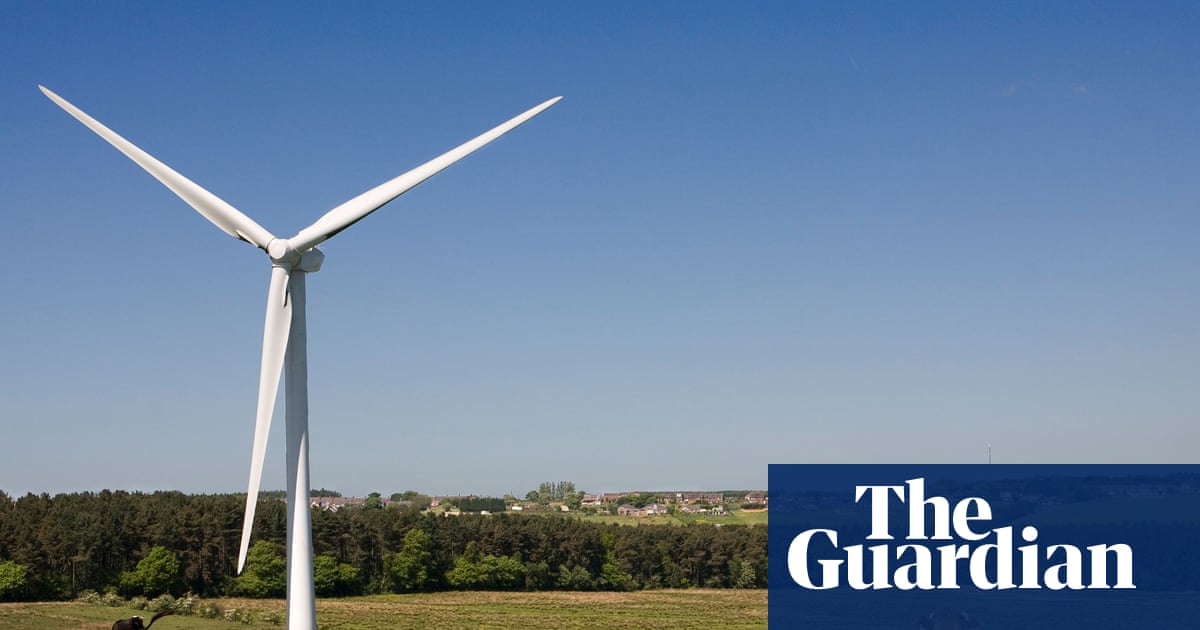 Getty Images
Getty ImagesGrowing up above a corner shop in the Sheffield suburb of Wincobank, Naseem Hamed rose from humble beginnings to become a boxing icon and…

 Getty Images
Getty ImagesGrowing up above a corner shop in the Sheffield suburb of Wincobank, Naseem Hamed rose from humble beginnings to become a boxing icon and…

Earlier this week, China formally restricted rare earth element exports and imposed sanctions on certain shipping companies, heightening global trade tensions and disrupting critical mineral flows.
Energy Fuels stands out with its U.S.-based rare earth assets and capabilities, drawing heightened attention as governments seek to strengthen domestic supply chains and reduce reliance on Chinese exports.
We’ll examine how Energy Fuels’ role as a U.S. rare earth supplier amid rising U.S.-China tensions could influence its investment outlook.
The end of cancer? These 28 emerging AI stocks are developing tech that will allow early identification of life changing diseases like cancer and Alzheimer’s.
To own shares of Energy Fuels, an investor must see value in its ambition to become a leading U.S.-based supplier of rare earth oxides and uranium as Western countries prioritize secure critical mineral supply chains. While China’s new export restrictions have driven short-term interest, the most immediate catalyst for the stock remains execution on rare earth production expansion at White Mesa. The biggest risk is still the company’s heavy reliance on third-party feedstock and uncertainty around advancing its own mining projects; this news does not immediately resolve supply chain challenges.
One recent announcement directly tied to this theme is Energy Fuels’ qualification of high-purity neodymium-praseodymium oxide for use in electric vehicle motors, achieved at its White Mesa Mill. As Western automakers and governments seek alternatives to Chinese materials, achieving this production milestone could support Energy Fuels’ push to gain offtake deals or policy support, both of which are central to unlocking further upside.
By contrast, investors should be aware that Energy Fuels’ rare earth business still faces supply bottlenecks of its own, with no guaranteed feedstock from its early-stage projects and…
Read the full narrative on Energy Fuels (it’s free!)
Energy Fuels’ narrative projects $553.4 million revenue and $237.8 million earnings by 2028. This requires 104.1% yearly revenue growth and a $330.9 million earnings increase from -$93.1 million.
Uncover how Energy Fuels’ forecasts yield a CA$22.35 fair value, a 24% downside to its current price.
Eleven Simply Wall St Community members estimate Energy Fuels’ fair value anywhere from US$2.73 to US$146.07, showing a remarkable breadth of outlooks. Amid these wide-ranging opinions, the company’s success may hinge on resolving rare earth feedstock constraints in light of tighter global trade conditions, so consider all viewpoints before forming your own.

In the past week, Robert Half was recognized by Forbes as one of the World’s Best Employers for 2025, an accolade based on an independent survey of more than 300,000 employees across 50 countries that measures satisfaction, culture, and global reputation.
This global recognition underscores Robert Half’s continued investment in employee well-being and its reputation as an employer committed to professional and personal growth opportunities.
We’ll examine how Robert Half’s global employer recognition could shape its investment narrative by highlighting employee-focused strengths and culture.
Trump has pledged to “unleash” American oil and gas and these 22 US stocks have developments that are poised to benefit.
To be a shareholder in Robert Half today, you have to believe that its reputation as a top global employer translates into long-term competitive advantages, especially as the biggest short-term catalyst remains a sustained recovery in hiring demand, while persistent pressures on revenue and margin are still the biggest risks. The recent Forbes World’s Best Employers award is a boost for the company’s employer brand, but it is unlikely to materially shift the near-term outlook given ongoing headwinds in the core business.
Among recent announcements, Robert Half continues consistent quarterly dividends, with the most recent payout of US$0.59 per share, reinforcing its focus on rewarding shareholders, even through a period of weak revenue trends. This dividend consistency may offer reassurance for some investors as they weigh the potential impact of new accolades on the company’s fundamental recovery story.
In contrast, investors should be aware of persistent revenue declines and the risk that…
Read the full narrative on Robert Half (it’s free!)
Robert Half’s narrative projects $5.9 billion in revenue and $313.2 million in earnings by 2028. This requires 1.9% annual revenue growth and a $135.1 million increase in earnings from $178.1 million today.
Uncover how Robert Half’s forecasts yield a $41.56 fair value, a 33% upside to its current price.
Five fair value estimates from the Simply Wall St Community range from US$32 to US$49,991.88, reflecting strikingly wide opinions on Robert Half’s potential. While investor confidence varies, the ongoing risk of flat or declining sales continues to be a factor in shaping expectations for the business’s trajectory, consider exploring several viewpoints before drawing your own conclusion.

An “exciting milestone” has been reached in the development of a new medical testing centre set to open this year.
All 13 modular units which will make up the building of the community diagnostic centre at the Camborne Redruth Community Hospital have been delivered and connected.
NHS Cornwall and Isles of Scilly said internal work was now underway to complete the fit-out ahead of the facility opening to patients.
Susan Bracefield, chief nursing officer of NHS Cornwall, said: “We are excited to be opening another new community diagnostic centre for Cornwall, as part of our continued investment in delivering more services closer to people’s homes, something we know local people really value.”
She added the centre would mean more patients would benefit from faster diagnosis, shorter waiting times, and improved access to treatment.
Once operational the community diagnostic centre would provide:
Geoff Searle, chief executive of InHealth, added: “This is an exciting milestone in the South West CDC programme.
“Expanding this model of healthcare in the South West will bring real benefits to local patients, improving health outcomes through greater access, capacity and choice.”
NHS Cornwall said the hospital site already had strong public transport links but would see an additional 22 new parking bays to ensure easy and convenient access for patients and visitors.

It was over four centuries ago to the day Saturday that Filipinos set foot on the North…

If you like a lot of chocolate on your biscuit you can no longer join our Club or pick up a Penguin, as the lunchbox favourites have reduced the amount of cocoa in their recipe so much they are now only “chocolate flavour”.
The two snacks, both made by McVitie’s, changed their recipes earlier this year amid soaring cocoa prices – which have prompted manufacturers to try a number of different tactics to keep prices down.
Club and Penguin can no longer be described as chocolate biscuits as they contain more palm oil and shea oil than cocoa, as first reported by the trade journal The Grocer.
“We made some changes to McVitie’s Penguin and Club earlier this year, where we are using a chocolate flavour coating with cocoa mass, rather than a chocolate coating. Sensory testing with consumers shows the new coatings deliver the same great taste as the originals,” the McVitie’s owner, Pladis, said in a statement.
Club’s classic advertising slogan citing its chocolate content is no longer in use, replaced by: “If you like a lot of biscuit in your break, join our Club.”
The company already had other snacks that can only be described as “chocolate flavour”, including flavours of Mini BN and BN Mini Rolls.
“We’re committed to delivering great-tasting snacks while minimising the impact of rising costs on consumers, adjusting formulations only when necessary,” Pladis said.
Cocoa prices have soared after poor harvests in the key growing regions of Ghana and Ivory Coast over the past three years, amid extreme temperatures and unusual rainfall patterns driven by the climate crisis.
The added cost has prompted manufacturers to use a number of tactics, from making bars and biscuits smaller to reducing cocoa content in an effort to keep the prices paid by shoppers down.
Last year prices more than doubled and went on to hit a record of close to $11 (£8.20) a kilogram in January. However, in recent months they have eased back amid positive news about this year’s harvest and reports of lower demand as manufacturers and shoppers switch to alternatives or reduce consumption.
KitKat White and McVitie’s white digestives can no longer be marketed as “white chocolate” products as they do not contain a minimum of 20% cocoa butter – although these recipes changed before this year.
after newsletter promotion
The old favourite Wagon Wheel has long been described as “chocolate flavour” as its coating does not meet the level of cocoa to be described as chocolate.
A spokesperson for Nestlé, which makes KitKat, said: “We regularly review our recipes to balance quality, affordability, and sustainability. Like every manufacturer, we’ve seen significant increases in the cost of cocoa over the past years, making it much more expensive to manufacture our products.
“As always, we continue to be more efficient and absorb increasing costs where possible. To continue to offer shoppers great value, it is sometimes necessary to adjust recipes of some of our products. Retail pricing is at the discretion of individual retailers.
“The ‘coating’ description on KitKat White is accurate and compliant to describe the ingredients used in the recipe. There are currently no planned changes to KitKat product descriptors given existing recipes.”

With autumn now in full swing, shorter days and lower temperatures spell higher energy costs. However, an innovative social enterprise is doing its bit to help by offering people the chance to reduce their electricity bills by as much as 30%.
Energy Local is a non-profit organisation that has created a way for people to benefit from local clean energy by teaming up with a renewable energy project in their area – it might be a wind turbine, solar farm or hydroelectric scheme – to get a better deal.
It enables participating residents to buy renewable electricity at a discounted price.
They form a club, which their local renewable project also joins, and it works by matching up the residents’ energy usage to the locally generated electricity. The club agrees a price residents will pay for the electricity they use when the local renewable energy is being generated.
In Bridport in Dorset, the installation of a wind turbine by the local farmer Peter Bailey in one of his fields allowed an energy club to be set up in 2021. Almost 60 people are signed up to the club, and the connection between local energy generation and usage is already having an impact on how members behave.
“Peter believes wind power of about 11mph produces sufficient power for it to generate. You know on a windy day that it’s generating power,” says Malcolm Drew, a semi-retired engineer and energy club member.
“The website we can access tells us what the turbine is doing – it picks up on wind speed and tells you how windy it is and if it’s a good time to use electricity,” he adds.
Richard Toft, who helped to found the club, says: “We’re all saving. Depending on your personal habits, people save a different proportion – anywhere between a 10% and 25% reduction on your bill.”
There are many more people interested in joining the Bridport club than available spaces but there are hopes that it can set up a solar farm based on a cooperative investment model to expand the project and allow more members to join.
Energy Local was set up by Dr Mary Gillie in 2016 after she witnessed a surprising frustration among people living in Ashton Hayes, Cheshire, who wanted their small village to become carbon neutral.
“They said: ‘Can we all just put solar power on our roofs? How do we then say that we’ve used that power?’” Gillie says.
“But at the time, we couldn’t show when they were using it. It was when smart meters began to be developed that I realised we could do that.”
There are now 36 energy clubs across Great Britain that Energy Local is involved with, stretching from Scotland down to Devon and Dorset. The idea behind them is simple. Thanks to smart meter technology, it is now possible to show how much electricity a household uses every half an hour. Energy Local has developed software that compares that usage with the electricity generated by a local renewable energy scheme such as a wind turbine, hydro project or solar farm.
Gillie and her team have worked with energy companies to negotiate a special tariff arrangement, thereby creating a “hyper-local” market that acknowledges the renewable power being generated in that area.
The price the club members pay for the electricity they use when the local clean energy is being generated is higher than the amount the renewable energy projects would normally get from selling their power to suppliers but lower than the price residents would usually pay via a regular tariff. “It’s a win-win,” Gillie says.
In Brixton, south London, Energy Local has helped unlock the potential of an existing solar project on the roof of a social housing block called Roupell Park. The photovoltaic panels on the building’s roof were installed in 2013 thanks to a community investment initiative organised by the not-for-profit organisation Repowering London.
“Everyone, as investor members, owns a piece of that kit on the roof [in Roupell Park],” says Afsheen Kabir Rashid, the co-founder and chief executive of Repowering London.
“It’s really empowering for local people. But we kept coming back to this point: how can we supply this energy locally? Energy Local has been one of the models that has allowed us to do that.
“It’s a small trial in Brixton – 18 households or so – but they have seen benefits on their energy bills already.”
Repowering London raises money for the solar panels through community shares. It believes that democratising the energy system is the fastest route to decarbonising the sector and making it fairer. “We still have huge fuel poverty in the UK,” Kabir Rashid says. “People are scared about the bills that arrive. People are disconnected from where the energy is coming from. The benefits of the extractive fossil fuel economy do not stay local in people’s pockets. But through community energy, we can bring people closer, make it visible.”
When the sun is weak or there is no wind, the energy club members have to pay a higher tariff – however, part of the aim of Energy Local is to encourage people to change their consumption habits.
Gillie says that as well as trying to support local renewable energy and reduce people’s bills, “we want to manage the electricity network as efficiently as we can … If we can get people to use more power when local generation is running or when fewer people are using it, we can solve both problems.”
Electricity demand is typically greatest between 4pm and 8pm but Energy Local encourages participants to set timers for washing machines and similar devices, and to try to move energy-intensive tasks to the times of day when local clean power generation is running at maximum levels and electricity is at its cheapest.
While the idea of hyper-local energy markets and cooperative renewable power generation may sound like a perfect solution to the energy crisis, Gillie is clear that community energy schemes cannot replace the national grid entirely.
“We need a robust overarching system to ensure the power keeps flowing,” she says. “We do as much as we can locally, but after a point [infrastructure costs] can become too expensive, and that’s where you need things to be handled at a national level.”
Those infrastructure costs, such as repairing and upgrading the cables and equipment that electrify our homes and businesses, are one reason why bills, including standing charges, have just gone up. On 1 October, the average energy price cap for households in Great Britain paying by direct debit increased by £35 to £1,755 for a typical annual dual-fuel bill.
“Our network is changing – we need to invest in it. We should have done this 15 years ago, and we’re playing catchup on a massive scale,” Gillie says.
Given the desire within the industry to wean the grid off gas turbine power stations and lower consumer prices by bringing more renewable power into play, well-integrated local energy generation sites offer a glimpse of what a more efficient, carbon neutral network may look like in the future.
They are designed to solve a problem in the electricity market: renewable energy schemes sell their power to suppliers but people living nearby are buying that electricity back for maybe two or three times that price.
An Energy Local club is legally a cooperative and is where a group of residents and a local renewable energy project team up to get a better deal for both parties.
To take part, you need a smart meter installed in your home.
The club agrees a price people will pay for the electricity they use when renewable energy is being generated locally. So they may want to run their washing machine when they know the local hydro scheme is going full pelt, for example. Sometimes it will be possible to match all the electricity someone uses to locally generated power but at other times they will use more than is available. For the extra electricity, they will be charged at different rates depending on the time of day.
The club selects a partner energy supplier that sells the extra power that members need when there is not enough local electricity generated. So those taking part will have to change to the supplier selected.
Energy Local says the savings will vary from household to household but adds: “We estimate you could save about 10% to 30% on your electricity bills.” However, club members still have to pay standing charges.
The organisation has created an online dashboard to help people manage their energy use. It can provide a forecast of how much power will come from the local renewable energy source each day.
If you would like to join an Energy Local club, there is a list on the organisation’s website of clubs that are up and running or being set up (some are now full). If there isn’t one in your area but you would like to be notified if one is set up, there is a form on the site where you can register your details. “We have clubs developing in many areas. Please let us know you are interested,” the organisation says.

Josh O’Connor just called Timothée Chalamet’s ambition “refreshing.”
Earlier this year, the Wonka star made headlines when he boldly expressed his…

Lani Pallister swam as if she was shot out of a cannon on Friday (17 October), zipping ahead of her nearest rivals to win the women’s 400m freestyle at World Aquatics Swimming World Cup in Westmont, United States of America.
The six-time World…